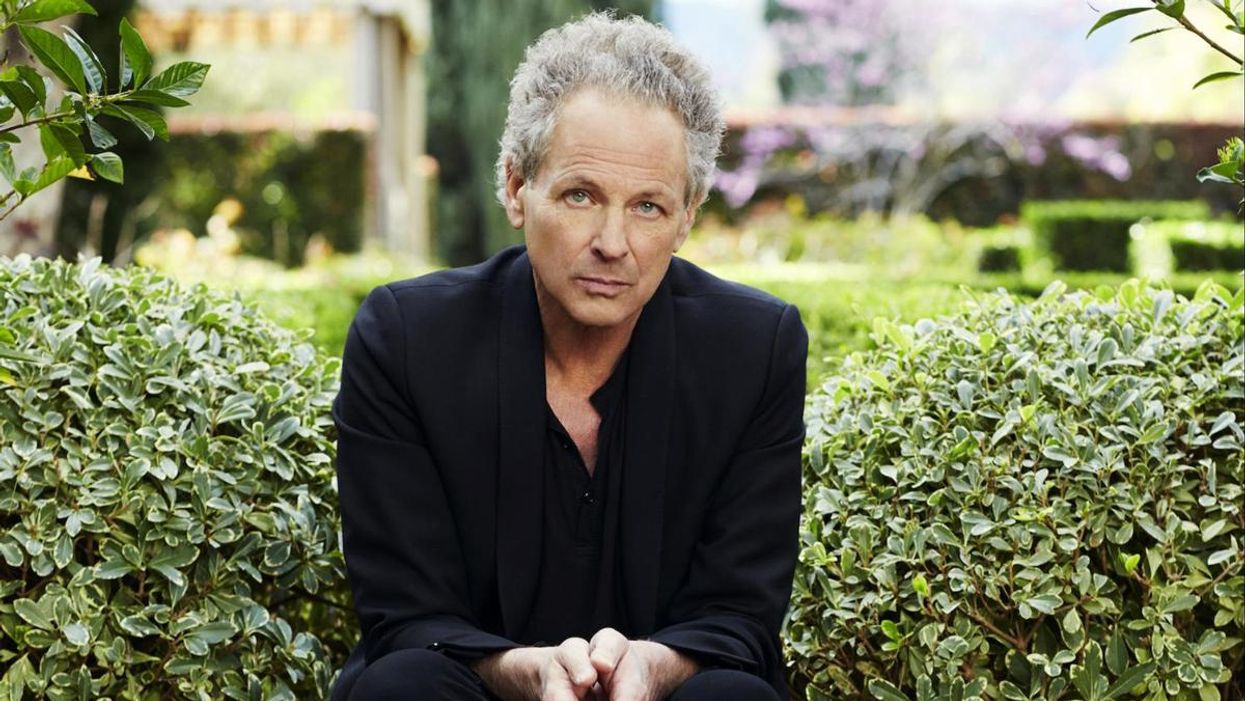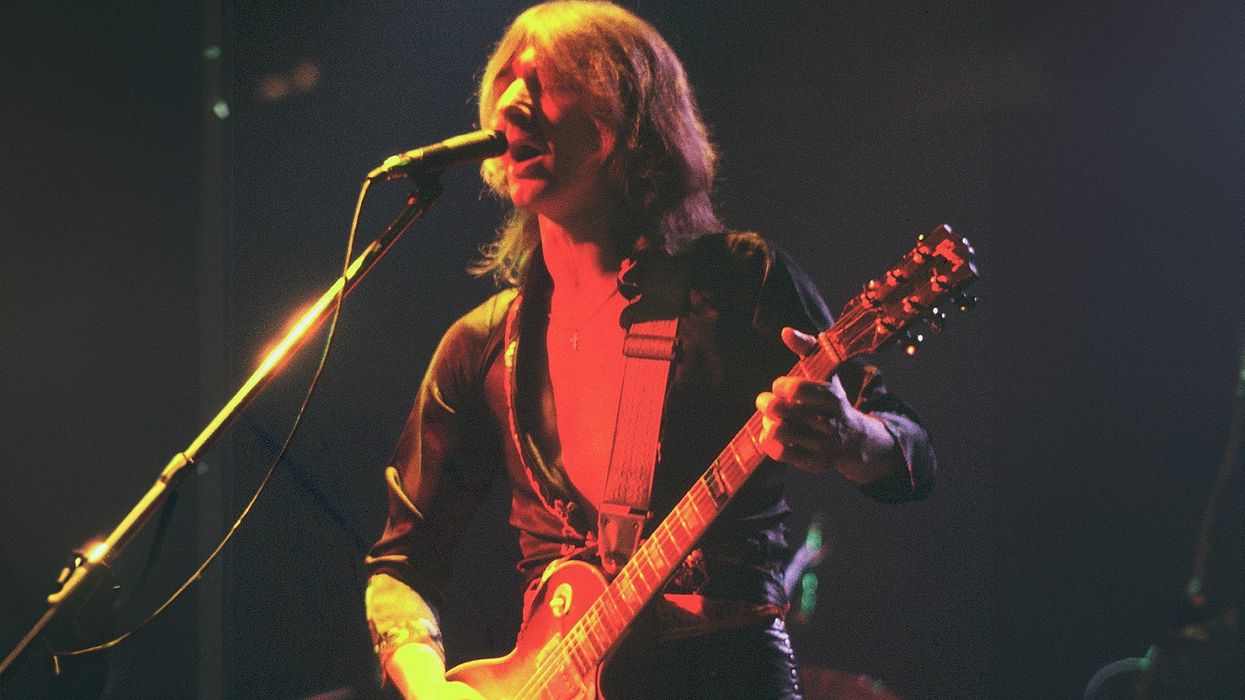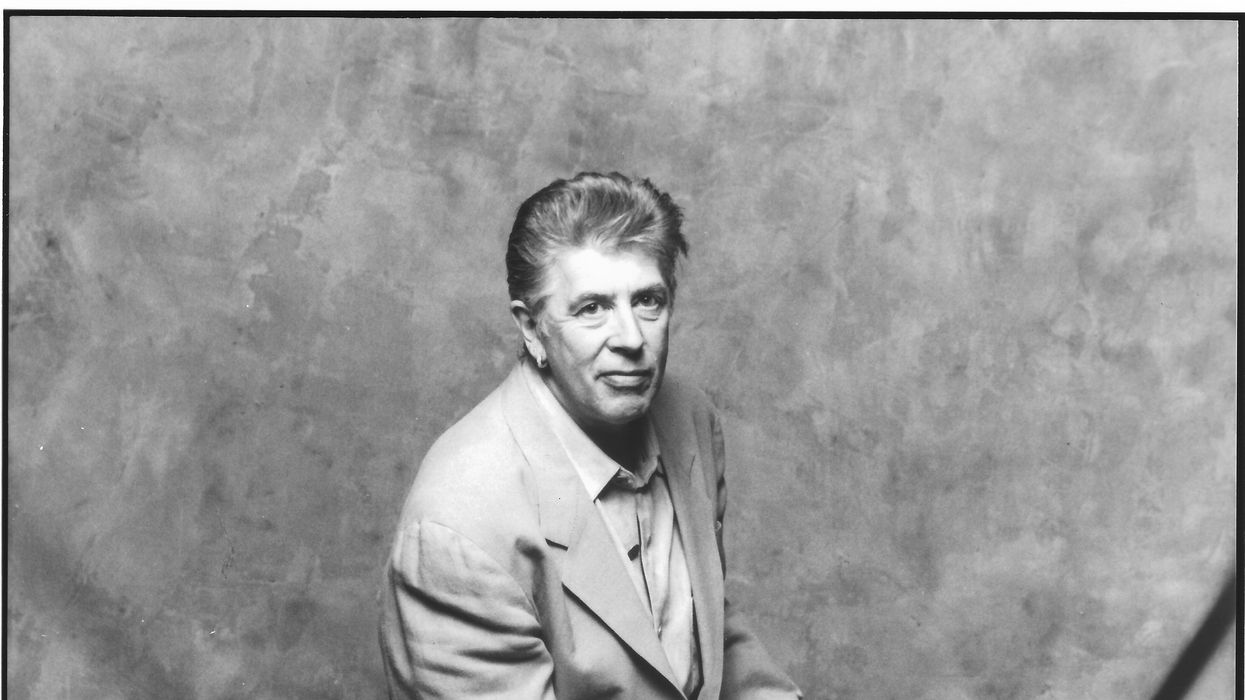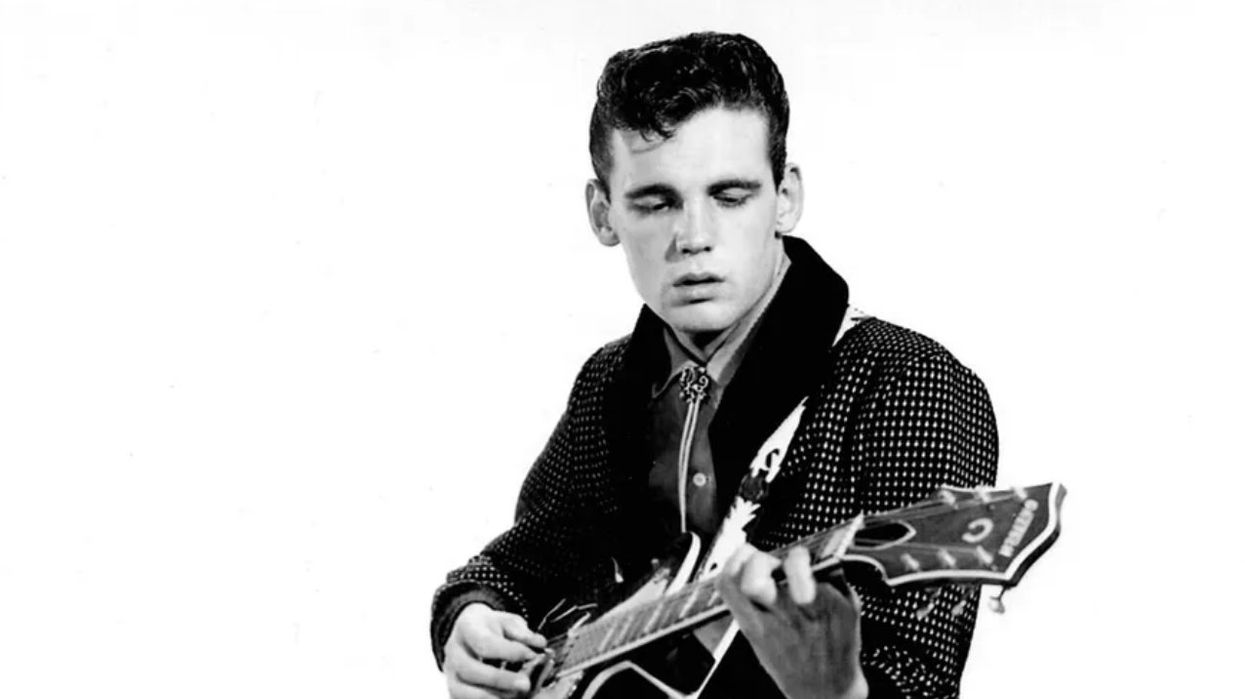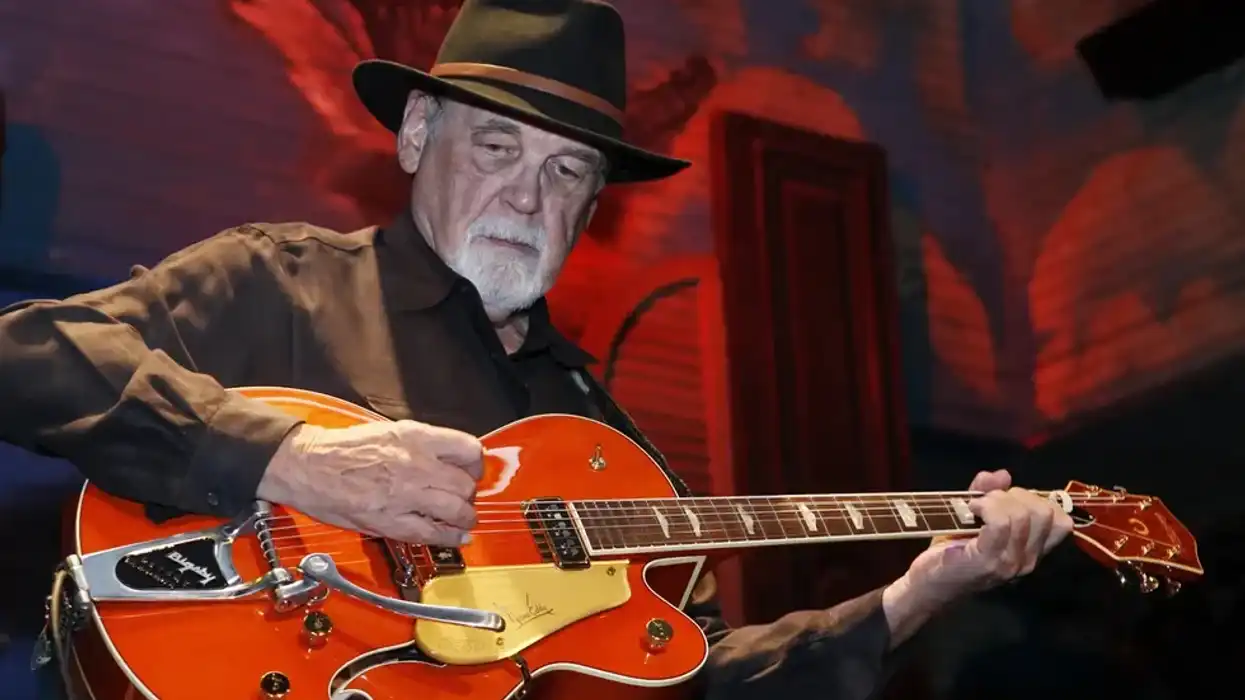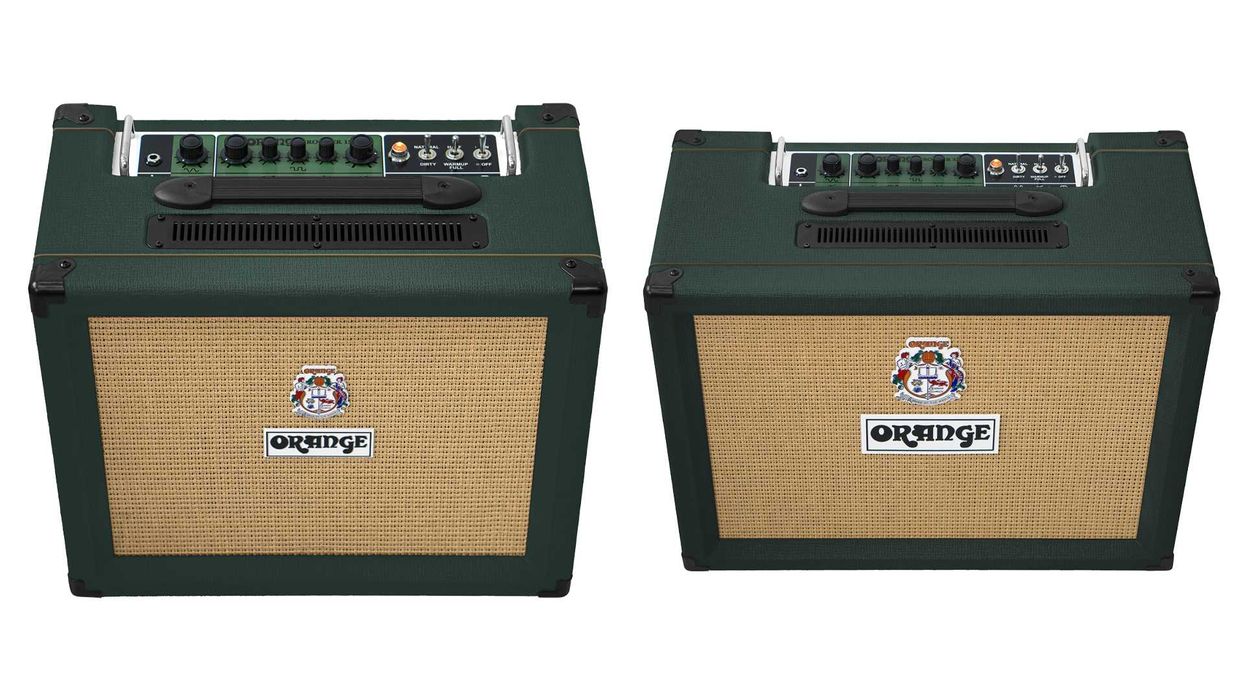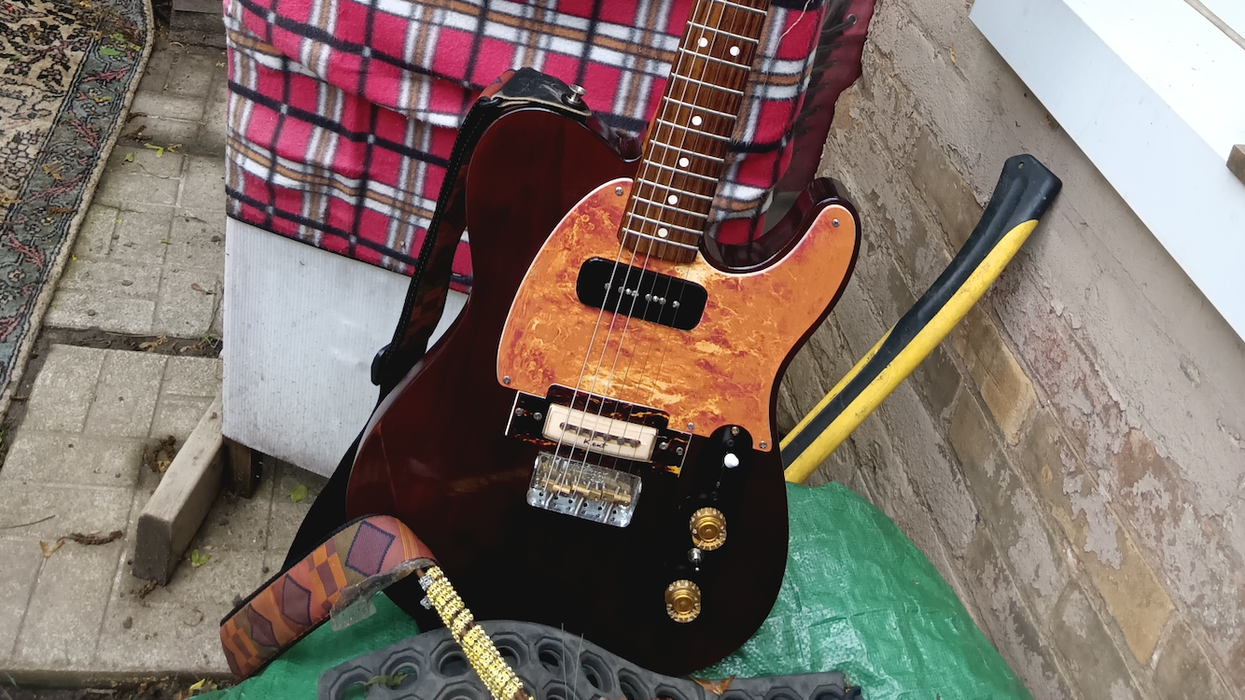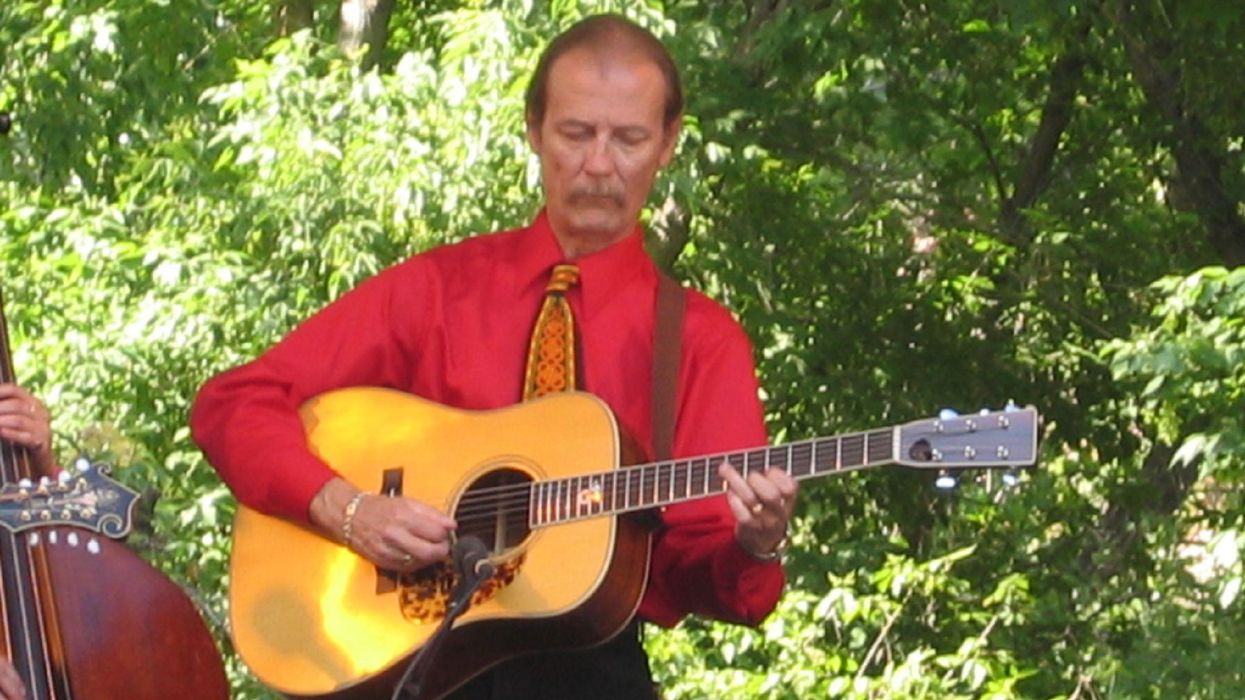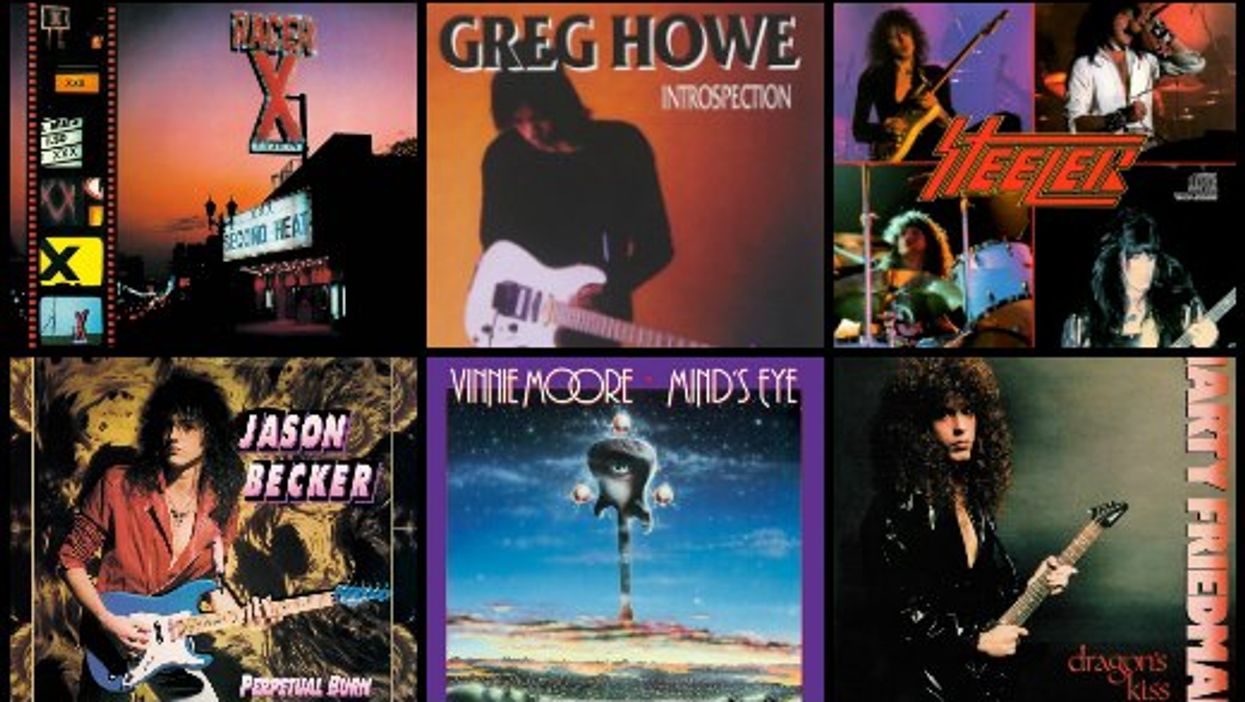Lindsey Buckingham's career has seen the highest of highs and the lowest of lows. On one hand, it's full of classic albums, multiple Grammy awards, and his membership in one of the most legendary rock bands ever—and, thus, in the Rock & Roll Hall of Fame—as well as a successful solo career spanning four decades. Yet it's his breakups, firings, and Fleetwood Mac's inter-band turmoil that people often focus on. And, as you'll soon read, the drama continues.
Through it all, Buckingham proves himself a survivor with immense talent and an undying drive to create. As a guitarist, songwriter, and vocalist, he has never lost sight of his unique touch and sound. And those decades of perseverance offer him the confidence and wisdom that permeate his first solo album in 10 years, Lindsey Buckingham.
The album is a fiercely personal offering about the effects of commitment in relationships and music. And Buckingham knows a thing or two about time's effect on music. He's been obsessed with the guitar and crafting great rock 'n' almost roll since the genre first shook its hips.
Lindsey Buckingham - On The Wrong Side (Official Audio)
"There are certainly any number of people who ended up playing rock 'n' roll whose lives were changed forever when Elvis Presley showed up," says Buckingham. "One day, my older brother brought home all those records. This was 1956, when 'Heartbreak Hotel' blasted on the scene. That was just a life-changing moment for me. About a year later, I got a three-quarter-size acoustic guitar. I was always sitting in my brother's room, listening to his 45s, and learning to play and sing those songs."
But early rock 'n' roll wasn't Buckingham's only influence. The '60s had something new waiting in the wings. "When the first wave of rock 'n' roll fell off, folk music took over," he recounts. "That informed my musicianship differently, in that my fingerpicking became more pronounced. The whole orchestral style of playing was something that I grasped and took on for myself quite early. But whatever originality and vision that I have now are because I was completely self-taught and didn't ever take a lesson and still don't read music."
From the rockabilly vibes of the new album's "Blind Love" to his acoustic classic "Never Going Back Again" from Fleetwood Mac's Rumours, his marriage of folk and rock 'n' roll is readily apparent. These sounds beautifully coalesced during Buckingham's historic run with Fleetwood Mac. Joining the band in time for 1975's Fleetwood Mac album, Buckingham brought a new life and new sound to an already well-established organization. He also had a little help, demanding his then-girlfriend Stevie Nicks come with him. The band agreed and cemented the future of classic rock.
"Whatever originality and vision that I have now are because I was completely self-taught and didn't ever take a lesson and still don't read music."
If you wonder how a band known for blues-rock heroism was able to evolve so quickly into chart-topping hitmakers, according to Buckingham, it was all about his songwriting chemistry with Nicks. "If you take a song like 'Dreams,' for example, the way she presented it to me was playing it with two fingers on the piano. It's the same two chords over and over," Buckingham explains. "It's a beautiful song, and the vocal placement is brilliant. But it needed architecture around it to set the sections off. That was all done through me holding onto the vision with layered guitar work. Having the architecture fulfill the potential of the song is where a lot of that comes from."
That songwriting chemistry propelled Fleetwood Mac through eight albums and for over 40 years. It also spawned such mega-hits as "Go Your Own Way," "Rhiannon," "Little Lies," and many more. But it was Buckingham's second album with the band that, in many ways, defines his legacy. And not only for the music. That album was 1977's Rumours.
Despite nearly every song being a classic, history remembers it as the ultimate breakup album. Not only were Buckingham and Nicks drifting apart, but bassist John McVie and keys player Christine McVie divorced. And bandleader/drummer Mick Fleetwood was suffering a relationship crisis of his own. Yet Rumours persisted. And thank goodness it did. Those struggles created a rock 'n' roll masterpiece.
Lindsey Buckingham’s Gear
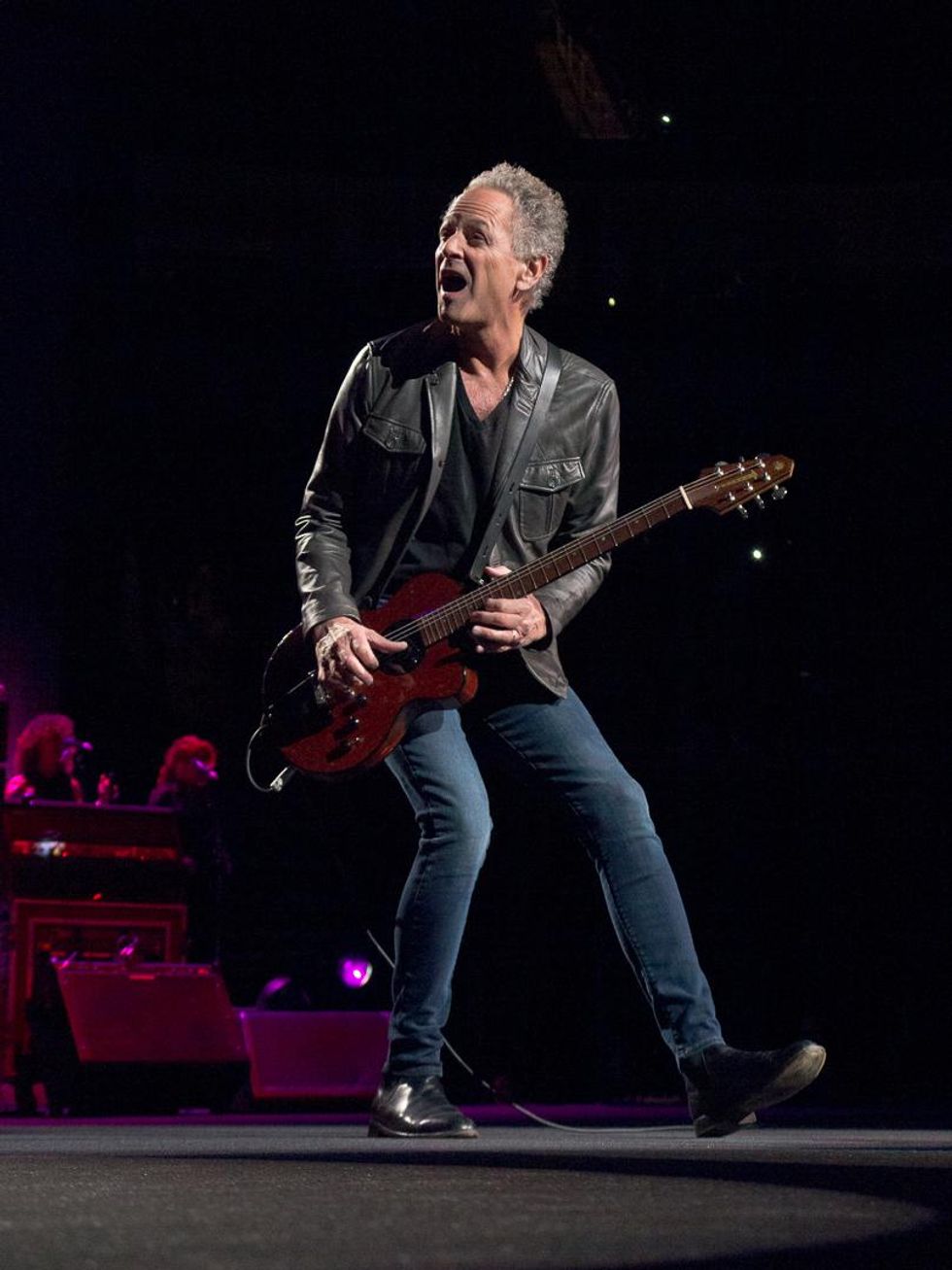
Rocking out with his Rick Turner—a guitar commissioned by Buckingham that's become an inseparable part of his musical personality. "I asked Rick if he would design me a guitar whose sound was a cross between a Les Paul's fullness and the crispness and percussiveness of a Stratocaster," he says.
Photo by Steve Kalinsky
Guitars
- 1964 Fender Stratocaster (studio only)
- Taylor 814ce with Fishman preamp
- Rick Turner Model 1
- Rick Turner Renaissance baritones
- Gibson Chet Atkins CE solidbody classical with MIDI pickup
Strings
- D'Addario XLs (various gauges)
Amps & Cabinets
- Two Mesa/Boogie Dual Rectifiers (electric)
- Trace Elliot TA 200 (synth)
- Fishman Loudbox (synth)
- Two SWR California Blondes (acoustic)
- 2x12 cab with Electro-Voice speakers
- 1x12 cab for acoustic guitar
Effects
- Boss SD-1 Super Overdrive
- Boss DD-3 Digital Delay
- Boss RC-30 Loop Station (live only)
- Roland GR-50 Guitar Synthesizer
As if time is cyclical, 44 years later, Buckingham finds himself in what might be a similar creative and emotional spot as he did back then. He was released from Fleetwood Mac in 2018 under closely kept circumstances. And once again, the split is part of the story behind a great album. "Well, ironically, this new album was done even before all this stuff went down with Fleetwood Mac. It was my intention to put this current album out so that there would be a somewhat smaller-scale project squeezed in and preceding yet another Fleetwood Mac tour," he explains. "But the politics within the band were somewhat prohibitive of my doing that. I was only asking for three months to tour and to do some TV and some press, and but not everyone was comfortable with that."
So once again, the Buckingham/Fleetwood Mac story is one of heartbreak. Today, the band is soldiering on with Mike Campbell (of Tom Petty and the Heartbreakers) filling the guitar spot. But many fans are asking, "Is there a Fleetwood Mac without Lindsey?" Not one to dwell in the past, Buckingham is asking a very different question: "Who is Lindsey without Fleetwood Mac?" Unfortunately, the album that now answers that question had to wait … and wait, and wait.
"It got put on the shelf after all this stuff went down with Fleetwood Mac," says Buckingham. "Then I thought, well, rather than put this new album out right now, let's do the anthology [Solo Anthology: The Best of Lindsey Buckingham]. I did that, and that was very cathartic for me, because I'd always known that I'd done a lot of good solo work. But I hadn't really revisited it and lived with all of that work in quite a long time. It was a more visceral response to everything. That was really a nice feeling to have."
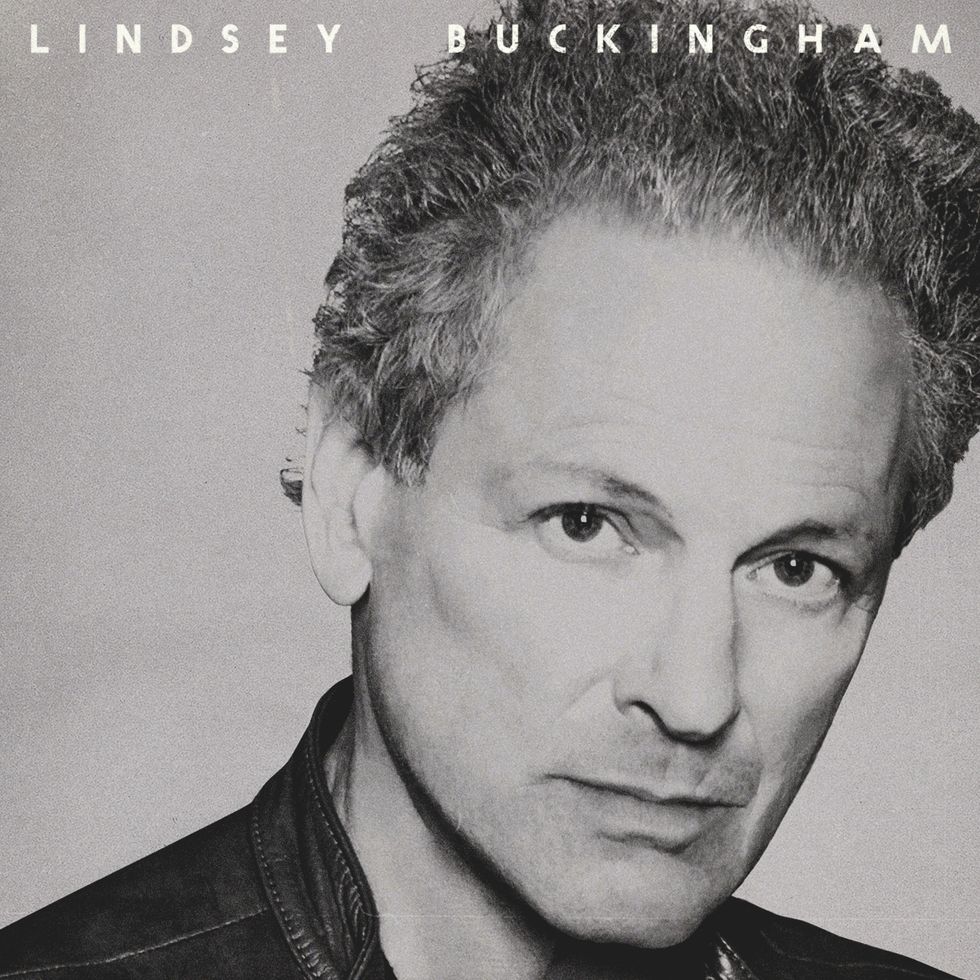
TIDBIT: Onstage, Buckingham and his Rick Turner Model 1 are inseparable, but in the studio this time, he employed a '64 Strat and Taylor 814ce.
Little did Buckingham know that the anthology wasn't the only hold-up coming his way. Invasive heart surgery and the pandemic would also play a role. "Literally right after that, in the very beginning of 2019, I had surgery. We were gearing up to tour and to put this current album out, and I had a multiple bypass operation that kicked it down the road," Buckingham says. "Then COVID hit, and we had to kick it down the road even further."
Although the delays were many, the most captivating thing about Lindsey Buckingham is how timely and relevant the songs are. Every word and every note seem to point to this exact moment in time. From lyrics about disintegrating long-term relationships to father time's effects on us all, it's like 2017 Buckingham already knew where 2021 Buckingham would be.
"The album has been done for over three years. So, it's not like the last three years had any influence on the subject matter or the style," Buckingham points out. "But I think all of the things that happened enriched the subject matter for me. They've come home to roost as much more tangible elements of my life. I think people, in a way, are picking up on that."
"When Fleetwood Mac asked me to join, they actually did try to get me to use a pick. But I was 25 then, and I'd been playing for about 19 years. My style was pretty much written in stone."
Regardless of when it was written, there's no question that the new album is intensely personal. And it's not just the subject matter. Put on a good set of headphones and you'll hear a presence and energy that only Buckingham can deliver. And I mean only Buckingham. Having written, recorded, performed, produced, and mixed almost every song by himself, the album is a beautiful self-portrait of who and where Buckingham is as a guitarist and songwriter today.
But aren't those clearly female vocals on songs like "I Don't Mind"? Nope. Those, too, are reflections of Buckingham's production and arrangement techniques. "I still have the old Neve console that I got in 1986. It's the same console that we cut [Fleetwood Mac's] Tango in the Night on. And I was using an old Sony 48-track reel-to-reel that you can slow the machine down to do a lot of work with your voice. It will then come up to speed, sounding more female or smaller. That's just something I've always loved to do, and I've been using it for years and years."
By taking this truly solo approach, Buckingham had time to sculpt each song to perfection. His 6-string orchestrations of layered guitars perfectly play off each other, as do his famous vocal harmonies.
Rig Rundown - Lindsey Buckingham
"If you are working on an album with Fleetwood Mac, you've got to bring in a more or less completed song to present to them. Then, to get from point A to point B to point C, it's all got to be verbalized. It's a much more conscious set of steps and perhaps even a more political process," Buckingham explains. "When I work alone, I'm in my studio by myself. I'm engineering. I'm also playing everything, so it becomes a bit like painting. You're having this one-on-one with the canvas. The production and the songwriting become much more intertwined. You don't necessarily have to even begin with a concrete idea.
"You're free to explore as you start to put things down, record them, and start to assemble some form to what you're doing. The work itself, or the canvas, if you will, starts to take on its own life. It leads you in directions that you might not otherwise go. And the process of discovery is greatly enhanced if you're someone who values being outside your comfort zone, wanting to take risks, and wanting to discover new things."
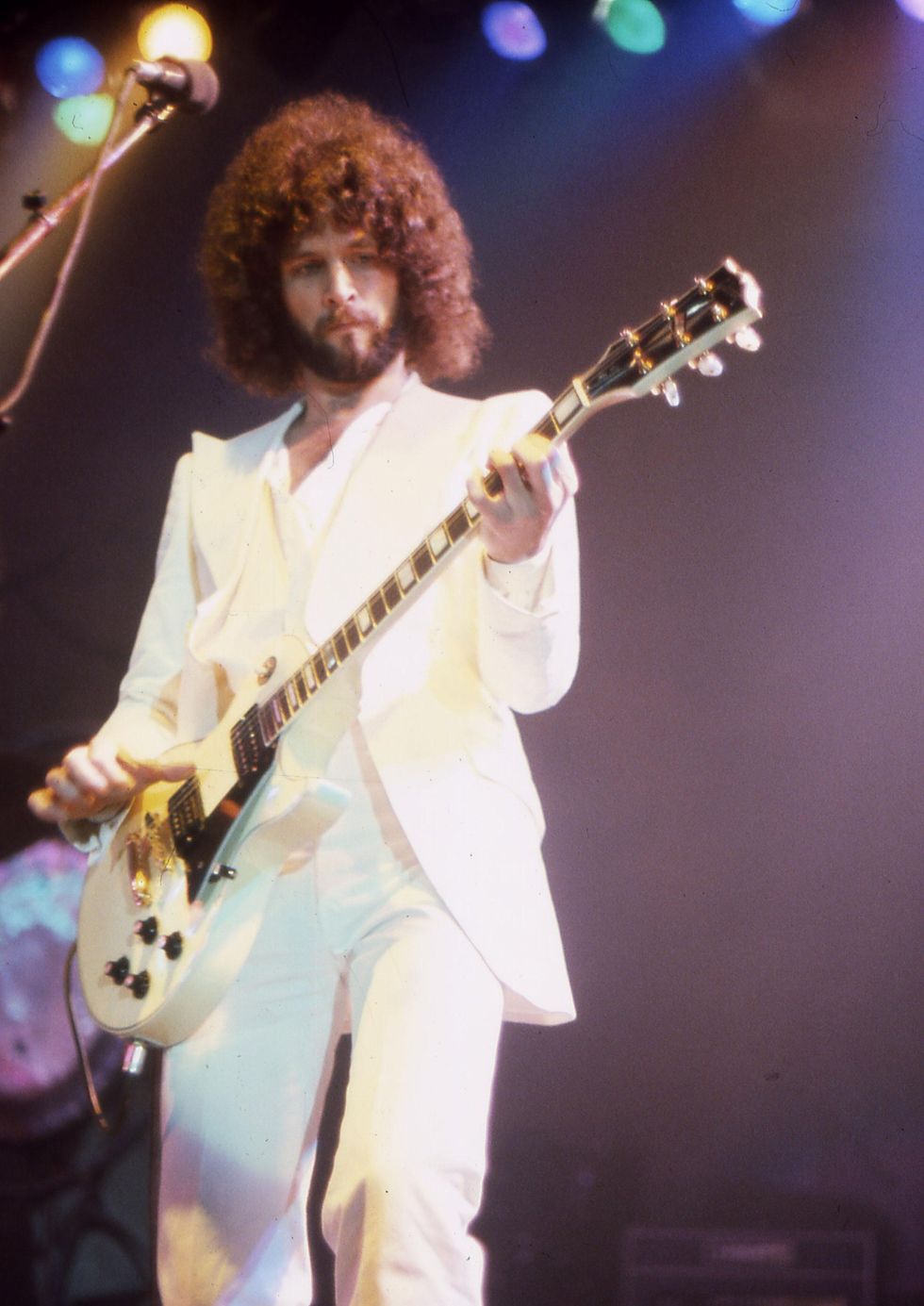
Dressed to match his Gibson Les Paul, Buckingham digs into the low strings on tour with Fleetwood Mac in 1975—the year of "Over My Head," "Say You Love Me," and "Rhiannon."
Photo by Laurens Van Houten/Frank White Photo Agency
That process worked. The album is pure ear candy in the best way, while also covering a lot of sonic ground. Songs like the opener "Scream" are classic Buckingham. And the album even offers a few tips of the hat to his old band. "Maybe I'm harkening back to some Fleetwood Mac references to some point. You could maybe connect the dots between the guitar-chiming 'On The Wrong Side' and 'Go Your Own Way.'"
But just when you fall into Buckingham's familiar trance, tracks like "Swan Song" and "Power Down" take an inspired and unexpected turn—full of electronic drum loops, chaotic vocal harmonies, hip-hop-approved guitar parts, and angular solos. "The foundation of both of those is actually the same. I had this multi-track of a drum loop, and it had many different tracks. It's the same drum loop on both songs," Buckingham points out. "So, they are definitely soulmates. They represent the cutting-edge aspect that moves further to the left from that pop sensibility. I thought it was important to have that represented."
Of course, Buckingham's guitar tone and playing permeate every minute of the album, displaying his elegant, high-energy fingerpicking style. "When Fleetwood Mac asked me to join, they actually did try to get me to use a pick. But I was 25 then, and I'd been playing for about 19 years. My style was pretty much written in stone. The fingerpicking just became part and parcel with my own style.
"Eddie Van Halen, for instance. He was a brilliant guitarist. But you could make the case that he's playing over the track and not into the track."
"Even if you go back before the folk influences that I had, Scotty Moore, who was Elvis's original guitar player, used his fingers. There was an orchestral style that he presented on those early records, as well," said Buckingham. "And I was listening to very folk-oriented stuff, like James Taylor and Cat Stevens. Even some rock stuff that had acoustic considerations, like Led Zeppelin. Jimmy Page was a super producer."
Another Buckingham trademark is his immaculate tone. Few others have carved out a signature style with clean sounds. Though not afraid to kick in his trusty Boss SD-1 for leads, it is layers of sparkling cleans that define his guitar's voice. "The cleanliness is helpful if you're trying to approach guitar work in service of a song," says Buckingham. "Eddie Van Halen, for instance. He was a brilliant guitarist. But you could make the case that he's playing over the track and not into the track. If you really want to follow in the footsteps of the Scotty Moores or the Chet Atkinses, who always are in service of making a better record out of a song, then I think cleanliness is helpful."
Axes & Artifacts: Rick Turner Model 1 Lindsey Buckingham Prototype
Another essential of Buckingham's approach to tone is his famed Rick Turner Model 1. "The Turner has been around so long because it was something that I specifically asked Rick Turner to make," states Buckingham. "Before I joined Fleetwood Mac, I'd been using a Stratocaster, which was very well suited to the finger style I had. But when I joined Fleetwood Mac, its sound was thin and a bit too percussive. So, I started using a Les Paul, which is not as well suited for fingerstyle. A few years in, I asked Rick if he would design me a guitar whose sound was a cross between a Les Paul's fullness and the crispness and percussiveness of a Stratocaster. The Model 1 was what he came up with. That really was the ticket and has been my guitar onstage ever since."
When guitarists picture Buckingham, it's typically with one of his Rick Turners. It may come as quite a shock that none of them made it onto the new album. In fact, not a lot of gear did. Instead, he relied on a couple of other trusty guitars, plugged straight in. "I don't use the Turners that much in the studio," he admits. "I tend to use the Strats or acoustics. Sometimes it's even just a Roland synth guitar if I want to get a certain preset sound. And I don't use a lot of amps in the studio. There are no amps at all [chuckles]. I do a lot of direct. So, what you're hearing is either an acoustic direct into the console or a Stratocaster. Those would be the two main go-to guitars for sure."

Buckingham bends a note while Stevie Nicks swirls behind him on a 2014 Fleetwood Mac tour. The guitarist says the band's mega-hits during the mid-'70s were the result of the pair's songwriting chemistry.
Photo by Ken Settle
Even for effects, Buckingham only keeps two trusty Boss pedals close by: an SD-1 Super Overdrive and a DD-3 Digital Delay. "I look around at most guitar players who have 10 or 12 pedals, and I don't know what to do with them. I just stick to the basics [laughs]."
The one outlier to the album's DIY, straight-in ethos is the closing song, "Dancing," which breathes with an ambiance all its own. Even still, those pad-like chords are just Buckingham and his Taylor. "I just used some plate reverbs off of some outboard gear. I can't tell you which actual settings. And I probably used some slap echo." Buckingham notes that engineer Mark Needham added some sonic colors to the track and says, "I'm not exactly sure what Mark put on there. I think he added his own element of atmosphere to it. I just thought the mix was cool, and we went from there."
So, with Lindsey Buckingham out and free of Fleetwood Mac's demands, Buckingham now has solo dates scheduled through the end of this year and into 2022. But with COVID continuing to threaten live music worldwide, Buckingham's taking whatever may come in stride. "The way this Delta variant is going, someone could call me up in a week and say, 'Hey, we're going to cancel it.' But I don't think so. I think we're just going for it at this point."
Big Love (Live At Saban Theatre In Beverly Hills, CA / 2011)
Lindsey Buckingham rips through a version of Fleetwood Mac's hit "Big Love" on a synth-loaded Gibson Chet Atkins acoustic in this gorgeous, often close-up, study of technique and tone.
